Whether you’re replacing a tired door or opting for a new style in your space, measuring internal doors can be a daunting part of the process. However, it doesn’t have to be. We’ve compiled this step-by-step guide on measuring internal doors, from the tools you’ll need to the measurement techniques we recommend to use to ensure the perfect fit.
What Do I Need?
Before you start measuring your doors, make sure you’ve got the right tools and equipment to hand to help you achieve the most accurate measurements.
- Tape Measure - We always recommend measuring in feet/inches or millimetres as these are the units used across most standard door sizes
- Pencil
- Spirit Level
- Paper/notebook
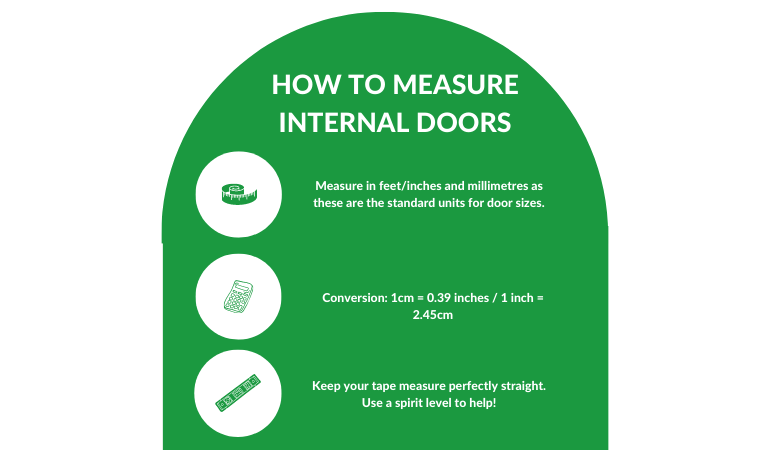
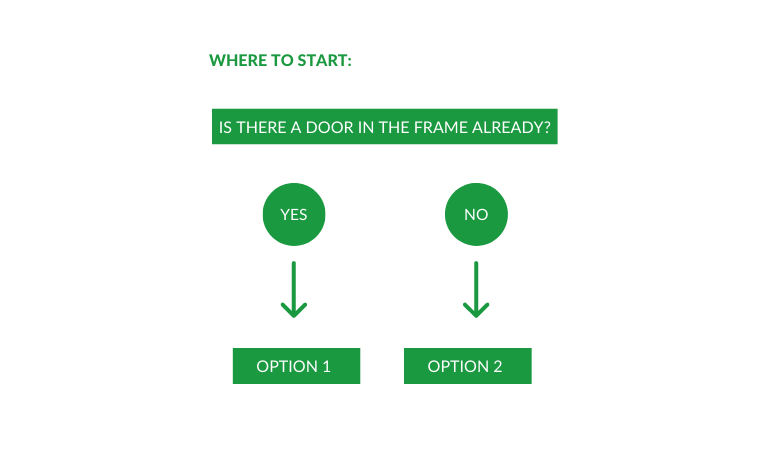
Option 1: Measuring a Door In a Frame
Measuring a door inside a frame is slightly different than measuring a single door and special considerations need to be taken. If you’re measuring a door inside a frame, for example measuring a door at home for a like-for-like replacement then you’ll want to follow these instructions.
Measure the Width
- Open the door and prop it in place with a doorstop or wedge.
- Starting in the centre of the door, measure horizontally across from edge to edge and note the measurement. Ensure your tape measure is flat at all times and use a spirit level to double-check this before taking your measurement.
- Repeat this process across the top (on the same side) and the bottom sections of the door, noting each measurement as you go. These 3 measurements should all match.
Measure the Height
- Using a spirit level, make sure your tape measure is flat. Starting on the hinged side, measure the height from the base of the door to the top and note the measurement.
- Repeat this measurement on the opposite side (the side that sits within the doorframe).
- Make a note of these measurements (these should be your longest measurements overall).
Measure the Depth
- Open the door, revealing the inner part of the door which sits inside the door frame when closed.
- Using a similar technique to the door width, measure this section in the centre (just above where the latch sits) and then again at the top and bottom.
- Take notes of all 3 measurements.
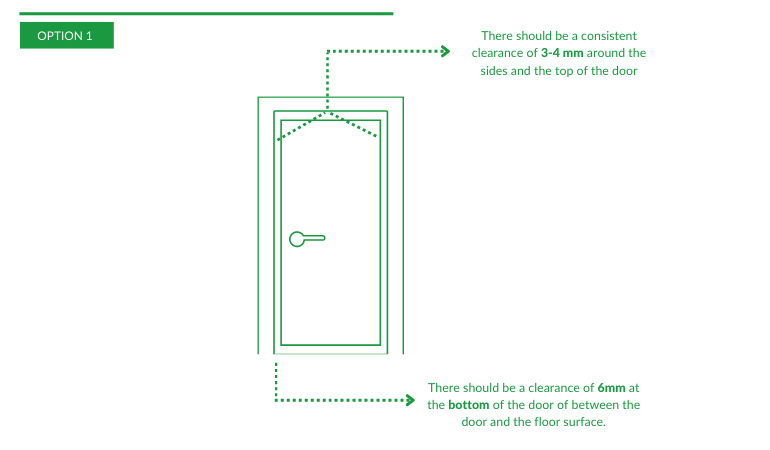
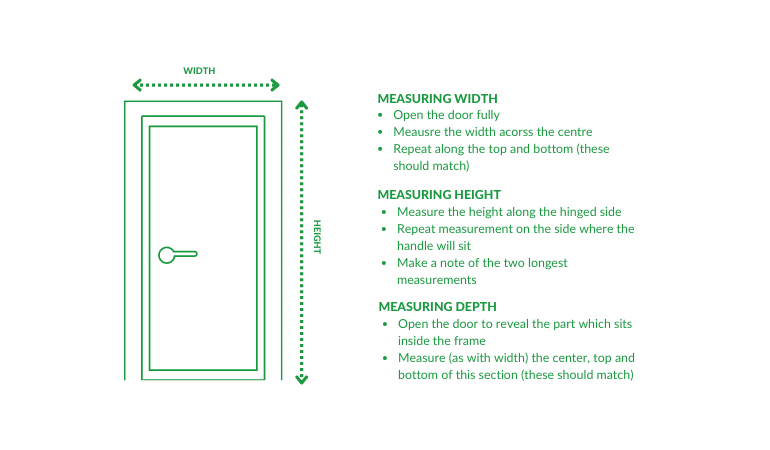
Option 2: Measuring a Door Without the Frame
When measuring a door that’s not in a frame, for example measuring a door while in store, the technique is slightly different, taking into account the lack of a frame.
Measure the Width
- Ensure that the door is flat and stable (not moving, sliding etc) before starting your measurements.
- As before, measure the front of the door from the centre, top and bottom with a flat, steady tape measure. If these don’t match, only take note of the longest of these measurements as your final measurement.
Measure the Height
- Again, ensuring that the door is flat, start your measurements.
- Measure along the hinged side (this may not yet have hinges)
- Measure along the opposite side (again, this may not yet have latches if there is yet to be a handle attached)
- If these do not match, note down the longest of these measurements as your final
Measure the Depth
- Measure the depth in the same way as the width, along the inner section of the door.
Again, if these don’t match, note the longest of your three measurements as your final.
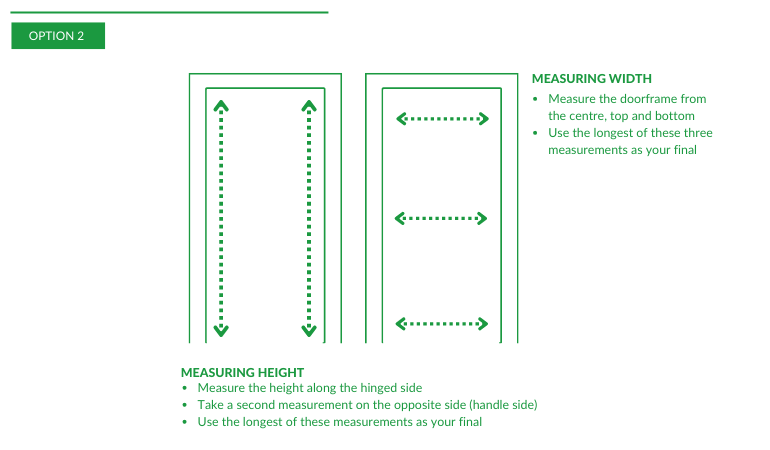
Calculating your Final Measurements
After you’ve got your measurements, you’ll have to deduct some mms/inches to provide allowance for heat expansion, carpets, door-frame sizes and other considerations. Below we’ve outlined a fool-proof way to ensure the perfect measurement.
Calculating your Final Measurements
Width: Once you’ve got your width measured properly using one of the two methods above, you should take 6-8mm away from your previous measurements to reveal your final width measurement.
Length/Height: Once you’ve noted your height and length reading, take 9-10mm off the top, providing clearance for any carpeting or flooring.
How Much Gap Should You Leave Around a Door?
When measuring for a door, there should be a consistent clearance of approximately 3-4mm around the top and sides of the door. At the bottom, there should be a clearance of approximately 6mm between the bottom of the door and the flooring to allow for total functionality of the door.
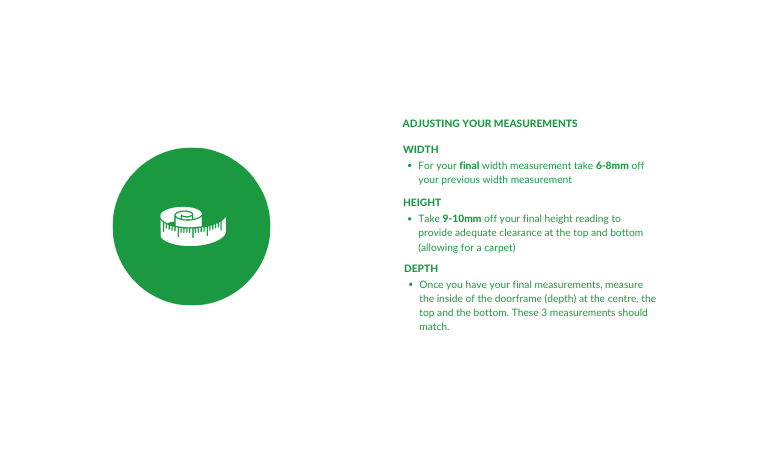
What are Standard Internal Door Sizes?
Most standard internal door sizes are 762mm x 1981mm, the most commonly used in residential and commercial buildings and the most widely offered by retailers. If you’re replacing your doors, your measurements will likely be within this region.
Unless you are replacing doors to areas such as bathrooms, toilets, pantries or other large storage areas as these tend to differ. You may also find you have non-standard doors, but worry not…our selection of stunning doors is available in both standard and non-standard sizes.
Picking a Replacement Door
When picking your new internal doors you should take a few things into account to make sure you achieve the style you’ve envisioned.
Aside from making sure it’s the right size, you should also consider the style of your interior and what style you want to create with your doors. Is your interior modern? Classic? Bold? Or subtle? This will also help determine what handles and accessories you choose to go with your new doors.
Finding the right door to complement your space should combine both style and practicality; our internal doors buying guide will help you find the best of both worlds and choose the right door for your home.
